All issues

Volume 23 (2005)
- Issue 3 Pages 195-
- Issue 2 Pages 108-
- Issue 1 Pages 2-
Volume 23, Issue 3
Displaying 1-5 of 5 articles from this issue
- |<
- <
- 1
- >
- >|
Editorial
-
[in Japanese]2005 Volume 23 Issue 3 Pages 195
Published: 2005
Released on J-STAGE: January 17, 2006
JOURNAL RESTRICTED ACCESSDownload PDF (13K)
Review
-
Masashi Sasa, Mitsumoto Sato, Takashi Nagayama2005 Volume 23 Issue 3 Pages 196-214
Published: 2005
Released on J-STAGE: January 17, 2006
JOURNAL RESTRICTED ACCESSAt present, no drugs cure epilepsy itself. All conventional antiepileptic drugs (AEDs) are effective as an anti-ictogenic, but not anti-epileptogeneses. It is important to differentiate the notions between the genesis of epileptic seizures and epileptogenesis. Paradigm shift is necessary to continuing the development novel AEDs that inhibit epileptogenesis. Differentiation epileptogenesis from the genesis of epileptic seizures is a most important theme.
This article reviewed history of AEDs, limitation of existing AEDs, and status of epilepsy researches in experimental animals and clinical studies. Furthermore, our latest findings in anti-epileptogenic experiment using spontaneously epileptic rats were demonstrated. At last, future direction of epilptogenic research was discussed.
View full abstractDownload PDF (386K)
Original Article
-
Yayoi Tsuboi, Naoko Kawaguchi, George Imataka, Hiroshi Suzumura, Hideo ...2005 Volume 23 Issue 3 Pages 215-222
Published: 2005
Released on J-STAGE: January 17, 2006
JOURNAL RESTRICTED ACCESSTo explore the relationship between fetal or perinatal brain insult and subsequent epilepsy, we retrospectively studied 357 patients who were admitted to our hospital, and followed for 3 years or more. Epilepsy was recognized in 15 patients during this period. Among patients weighing under 1,500 g at birth, epilepsy occurred in 2.8%, whereas in those weighing 1,500 g or more at birth, the rate was 5.2%. Mean age at epilepsy development was 51 months in patients weighing under 1,500 g at birth, and 21 months in those weighing 1,500 g or more at birth. The etiology of epilepsy was asphyxia (Apgar score 3 or less at 1 minute) and neonatal intraventricular hemorrhage in most of the patients weighing under 1,500 g at birth, whereas prenatal periventricular leukomalacia and perinatal hypoxic-ischemic encephalopathy were common in those weighing 1,500 g or more at birth. Epilepsy treatments for patients who weighed under 1,500 g at birth were successful, but over half of those with epilepsy who weighed 1,500 g or more at birth needed three or more antiepileptic drugs. Epilepsy was common in patients with intraventricular hemorrhage and hypoxic-ischemic encephalopathy, and was tended to be intractable when it developed at or before 6 months of age.
View full abstractDownload PDF (69K)
Case Report
-
Mitsutoshi Okazaki, Masumi Ito, Takashi Yakushi, Kunio Yajima2005 Volume 23 Issue 3 Pages 223-228
Published: 2005
Released on J-STAGE: January 17, 2006
JOURNAL RESTRICTED ACCESSWe report a case of frontal lobe epilepsy that was characterized by manifested absence-like seizures which were likely to be of frontal origin. The patient was a 28-year-old right-handed man who had been treated with antiepileptic drugs following a generalized tonic-clonic seizure at the age of 14 months. This initial seizure was followed by atypical absence, which persisted until the age of 8 years. After about one year free of clinical seizures, he relapsed at the age of 9, exhibiting simple partial seizures in addition to absence-like seizures. Under simultaneous EEG-VTR monitoring, he exhibited seizures characterized by staring spells, arrest of speech, and alteration of consciousness. The concomitant EEG recordings showed diffuse 3Hz spike-waves with right frontal onset. His interictal EEGs showed isolated right frontal spikes. SPECT/PET findings supported a diagnosis of right frontal lobe epilepsy. At 7 years old, his EEGs showed diffuse irregular spike and wave complexes. Later, at the age of 8 years, these atypical spike and wave complexes disappeared, giving way to focal spikes. Finally, at the age of 10, he manifested diffuse 3Hz spike-wave discharges with frontal onset. These findings suggest that EEG abnormalities change with age in frontal absence.
View full abstractDownload PDF (147K)
Breif Communication
-
Akihisa Okumura, Takeshi Tsuji, Hiroshi Ozawa, Masatoshi Ito, Kazuyosh ...2005 Volume 23 Issue 3 Pages 229-232
Published: 2005
Released on J-STAGE: January 17, 2006
JOURNAL RESTRICTED ACCESSWe conducted a questionnaire survey on the prevention against adverse effects during ACTH therapy. A questionnaire was sent to 113 institutes where the members of the board of counselors of the Japanese Society of Child Neurology are working. The replies from 51 institutes were analyzed. Tapering-off of ACTH was performed in 42 institutes. Tapering-off of ACTH was considered to be necessary in 35 institutes. The most common reason for its necessity was the concern for endocrinological problems. The precaution against infection was taken in 34 institutes. The correction of hypokalemia was made in 19 institutes. The evaluation of brain shrinkage was done in 46 institutes. Our study revealed a wide variety of prevention against adverse effect of ACTH. The standardization will be necessary in order to perform ACTH therapy more appropriately.
View full abstractDownload PDF (42K)
- |<
- <
- 1
- >
- >|